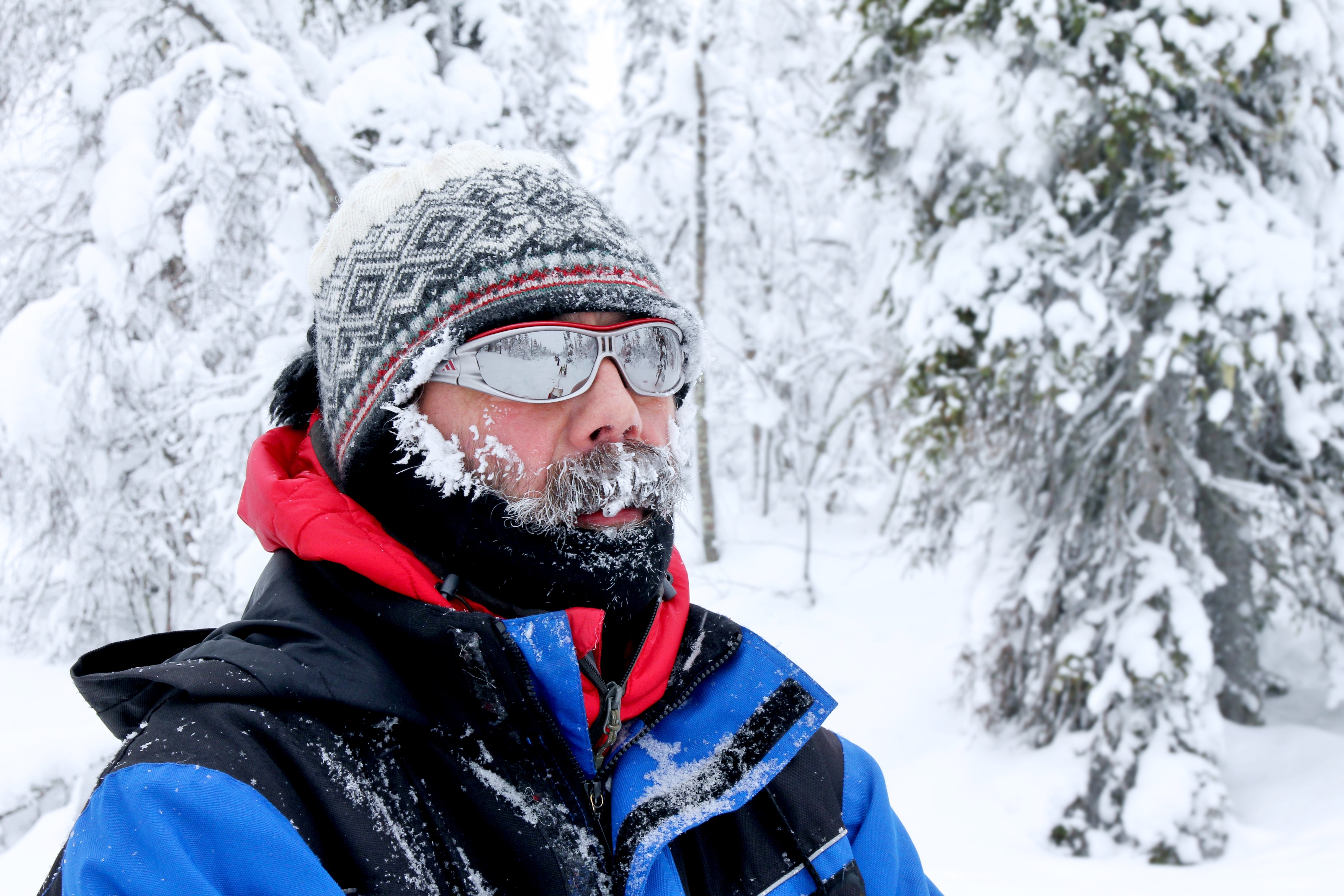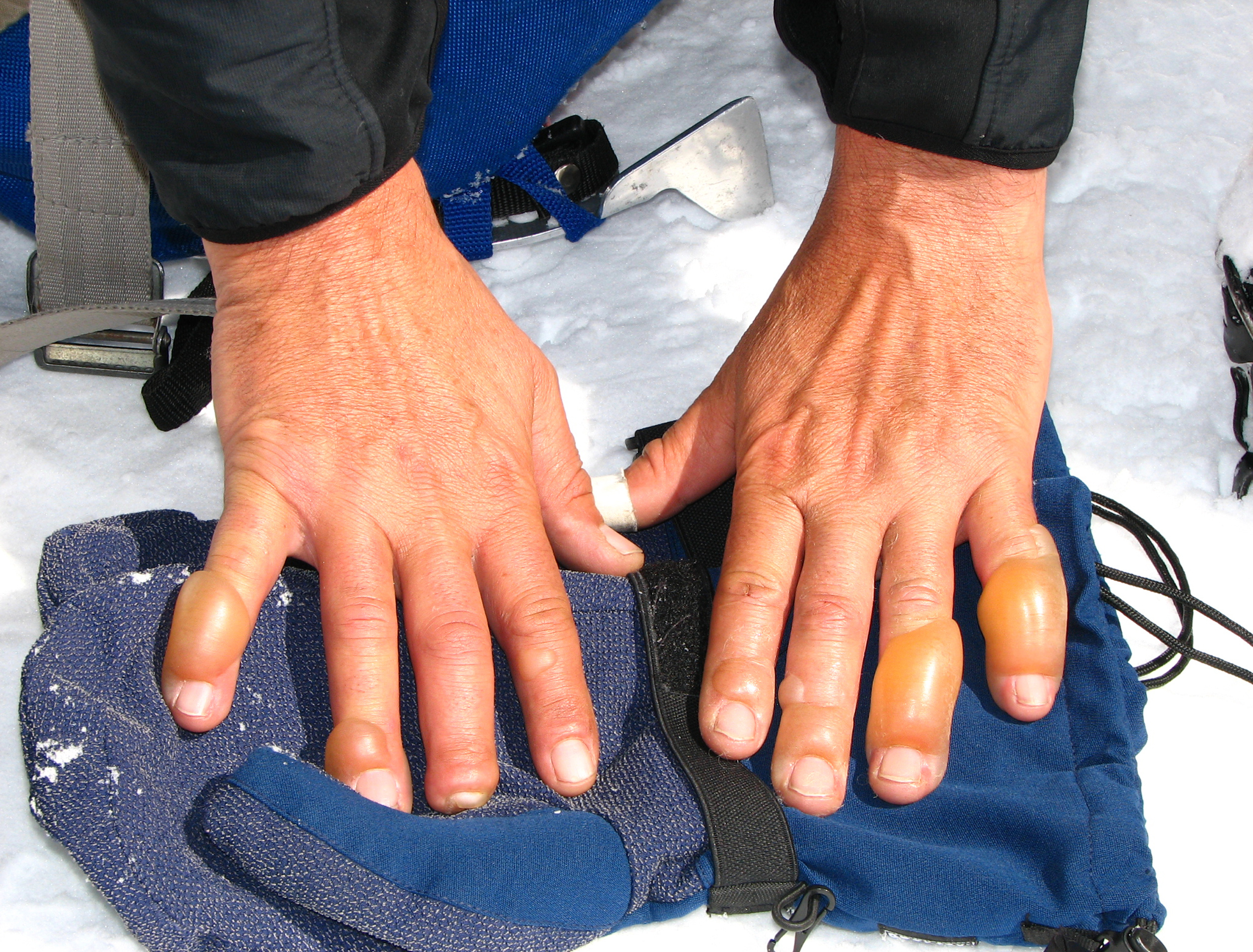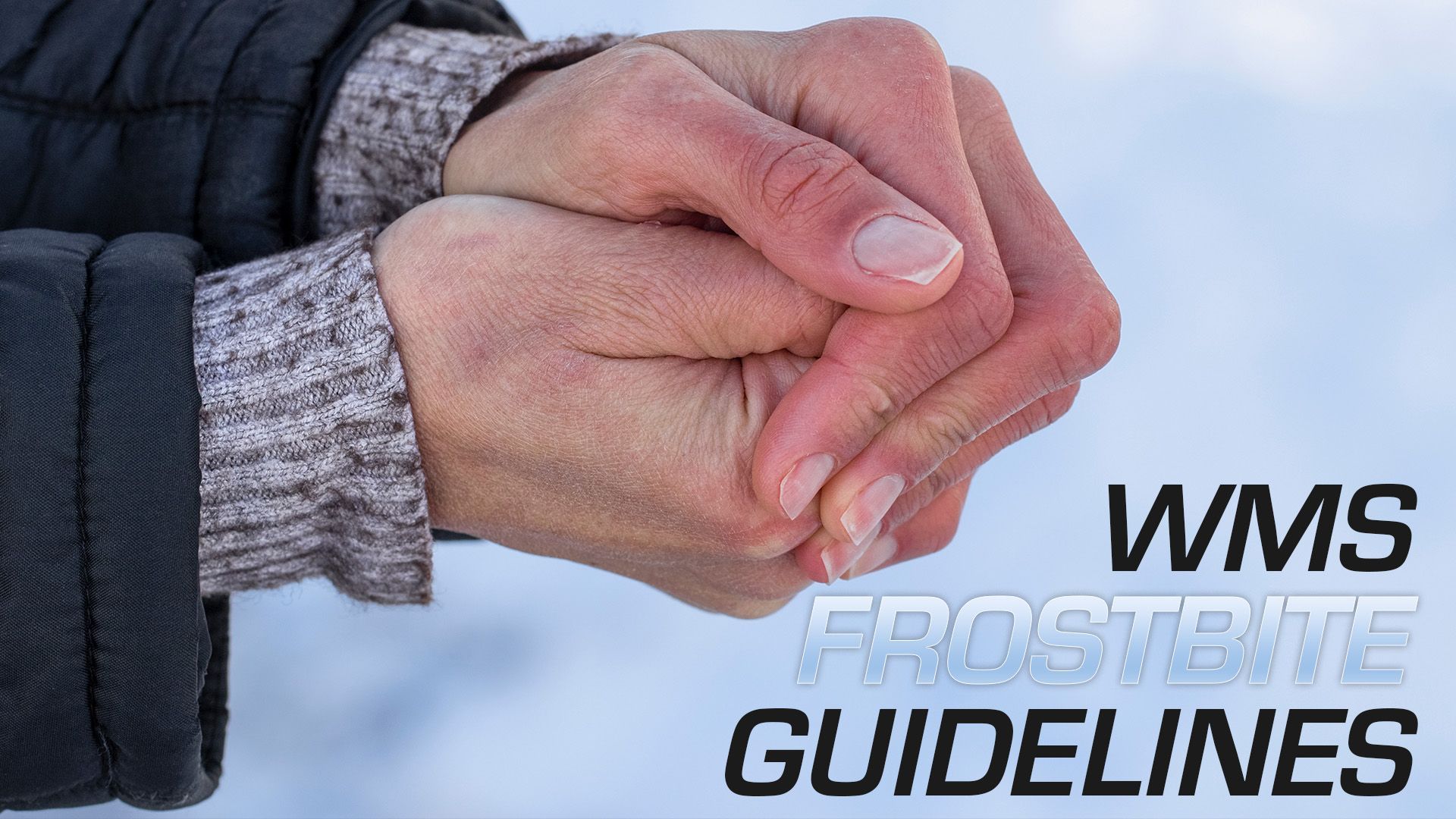Header Image by © Yuliya / Adobe Stock
Winter is here so let’s get ready for cold weather injuries! Today I’m reviewing the 2019 WMS Practice Guidelines on Frostbite. It’s a great article produced by the world experts on cold injuries. Available at Wilderness & Environmental Medicine.
Classification:
- Frostnip: Superficial nonfreezing injury, intense vasoconstriction.
- Frostbite: 4 “degrees”, but for the field it is more useful to use “superficial”(1-2 degree, edema/clear/milky blisters, no/minimal tissue loss anticipated) vs. “deep”(3-4 degree, hemorrhagic blisters, anticipated tissue loss).


Prevention is key! If you are getting numb, frostbite may be next. (1B/C)Maintain peripheral perfusion, exercise, protect from cold. If tissue is frozen you must make the decision whether or not to rewarm in the field. You MUST AVOID refreezing. If the tissue might refreeze, then it is better to keep that part frozen until definitive rewarming can occur. Allow tissue to thaw spontaneously. Treat concurrent hypothermia. Hydrate/avoid hypovolemia. (2C)Consider IV LMWD: Low Molecular Weight Dextran (if patient not considered for thrombolytics). (2C) Ibuprofen-decrease production of prostaglandins and thromboxanes, also helps with pain. (2C) minimize use of the extremity.
Rapid Field Rewarming(1B)- if definitive care is greater than 2hrs, use warm water bath to rapidly rewarm. Heat water to 37-39 deg C (98.6-102.2 deg F). Rewarm until body part becomes red/purple and becomes soft/pliable to touch (typically about 30 min). Slow thawing(warm location, shared body heat) is next best treatment. (1C) Apply loose bulky dressing and elevate extremity.
Hospital Tx-
Treat hypothermia, hydrate, rapid rewarming, LMWD, drain clear blisters. Leave hemorrhagic blisters, topical aloe vera, tetanus prophylaxis, Ibuprofen, advanced imaging. Deep frostbite- angiography with tPA(rapidly, each hour delay decreases salvage by 28%). IV Iloprost (not US FDA cleared) is first line when tPA is contraindicated (see article for dosing). Look out for compartment syndrome. Amputation- should be delayed until definitive demarcation occurs (unless patient is septic!).
Myths-
- Do not rub snow or ice on the tissue.
- Leave blisters alone, do not debride in the field.
- Do not give O2 unless patient is hypoxic.
- Do not administer antibiotics unless other indications are present.
- Alcohol does not improve frostbite or hypothermia.




